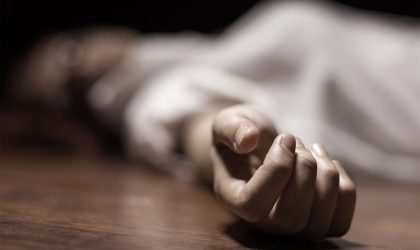Carbon monoxide poisoning is a potentially fatal condition that occurs when carbon monoxide (CO) builds up in the body. Carbon monoxide is an odorless and colorless gas that is created when carbon-based fuels, such as natural gas, gasoline, wood, coal, oil, or kerosene, are burned. If carbon monoxide accumulates to toxic levels in a person’s bloodstream, it can cause death. In addition to carbon monoxide poisoning from fuel sources such as boilers and furnaces, carbon monoxide can be released from burning cigarettes and cigars.
The symptoms of carbon monoxide poisoning can range from mild to severe depending on the amount of carbon monoxide that has been inhaled and the length of time exposed. At lower concentrations, carbon monoxide can cause dizziness, headache, confusion, nausea, vomiting and fatigue. At higher concentrations carbon monoxide can lead to coma and even death. Symptoms typically occur within hours after exposure and may last for several days after exposure has ended.
Unattended deaths are sudden or unexpected deaths that go undiscovered for any period of time due to the fact that there was no one present at the time of death to observe it happening or contact authorities afterwards. An unattended death could occur due to natural causes such as heart attack or stroke; however more often than not they are caused by an intentional act such as suicide or murder. Unattended deaths stemming from carbon monoxide poisoning often go undetected if there is no carbon monoxide detector present in the home where the victim was found.
Carbon monoxide detectors
When it comes to preventing these deaths it is important for individuals living in homes with fuel-burning appliances like furnaces and water heaters have them checked regularly by qualified personnel for proper ventilation and maintenance. It is also important for homeowners to install carbon monoxide detectors in their homes which will alert them whenever dangerous levels of carbon dioxide become present in their environment so they can take necessary safety measures before serious harm occurs.
In summary, understanding what causes this and how it affects the human body is extremely important in order to prevent fatalities associated with this condition. Having properly installed and functioning carbon monoxide detectors installed on your property can help protect you and your family members against this silent killer while being aware of unattended deaths caused by carbon dioxide poisoning can help you recognize when assistance may be needed before its too late.
Celebrity deaths from Carbon Monoxide Poisoning
Carbon monoxide poisoning is a major cause of undiscovered death, particularly among celebrities, as unattended deaths are often not recognized until it’s too late. Carbon monoxide (CO) is an odorless, colorless gas that can often go undetected in enclosed areas, leading to accidental ingestion and poisoning.
When carbon monoxide enters the bloodstream, it binds to hemoglobin molecules and slowly replaces oxygen molecules. As carbon monoxide accumulates in the bloodstream, normal oxygen levels become increasingly lower. This lack of oxygen causes cells throughout the body to die due to severe hypoxia. While carbon monoxide poisoning does not always lead to death, long-term exposure can cause lasting damage to the brain and other organs.
One high-profile case of carbon monoxide poisoning was actor Paul Walker’s death in 2013. Longtime friend Roger Rodas had been driving Walker’s Porsche Carrera GT when they lost control and crashed into a street light pole before bursting into flames. It wasn’t until later that it was discovered that carbon monoxide seeping from the exhaust system had caused them both to lose consciousness prior to the crash. This type of carbon monoxide poisoning is known as “silent killer” because there are no symptoms until it is too late.
Whitney Houston – John Denver – Anna Nichole Smith Deaths – Carbon Monoxide Poisoning
Other celebrities who have been victims of carbon monoxide poisoning include Whitney Houston in 2012, John Denver in 1997, Gary Coleman in 2010 and Anna Nicole Smith in 2006. In all these cases carbon monoxide had silently accumulated inside a confined space – such as an airplane cabin or a bathroom – without anyone noticing due to its odorless nature. The only way these deaths could have been prevented would’ve been through carbon dioxide detectors installed within those spaces which would alert people when levels become hazardous quickly enough for people to leave or take proper safety measures against CO poisoning.
In order to reduce the risk of carbon monoxide poisonings – whether accidental or intentional – it is important for people to be aware of potential risks associated with carbon dioxide buildup indoors such as faulty furnaces or improper ventilation systems and make sure their residence has working carbon dioxide detectors installed at all times. Carbon dioxide detectors are relatively inexpensive but they can save lives by alerting homeowners when dangerous levels of CO build up inside their houses before any harm occurs; thus protecting them from silent killers like carbon monoxide poisonings including celebrity deaths like Paul Walker’s tragedy or those mentioned above .

